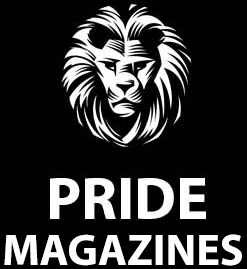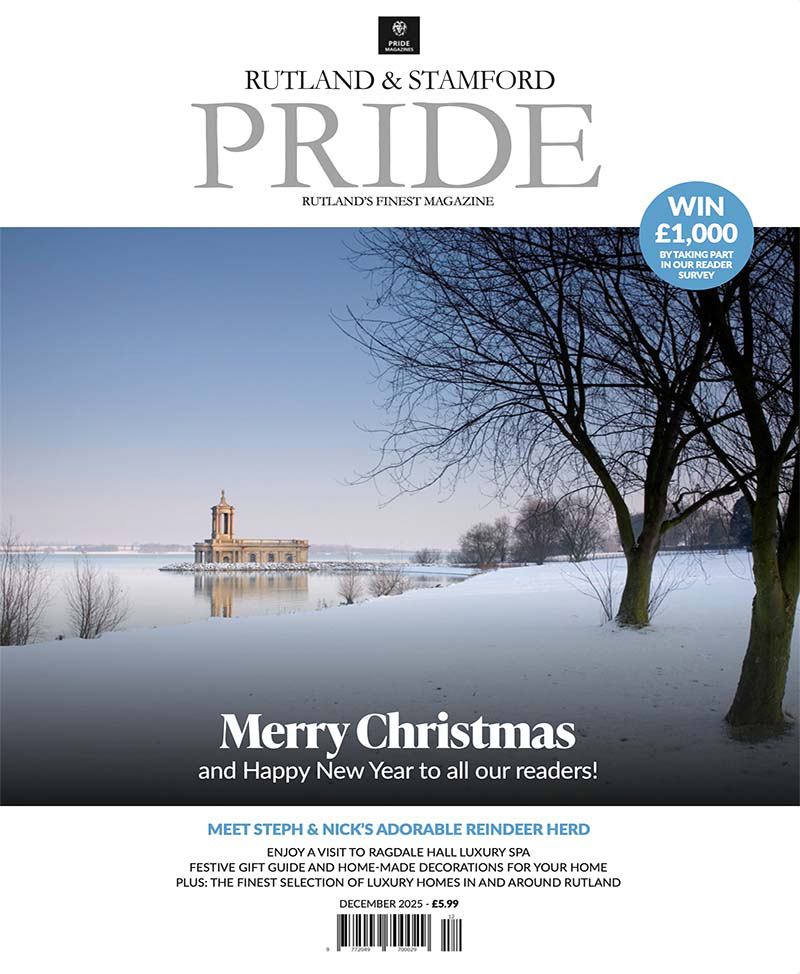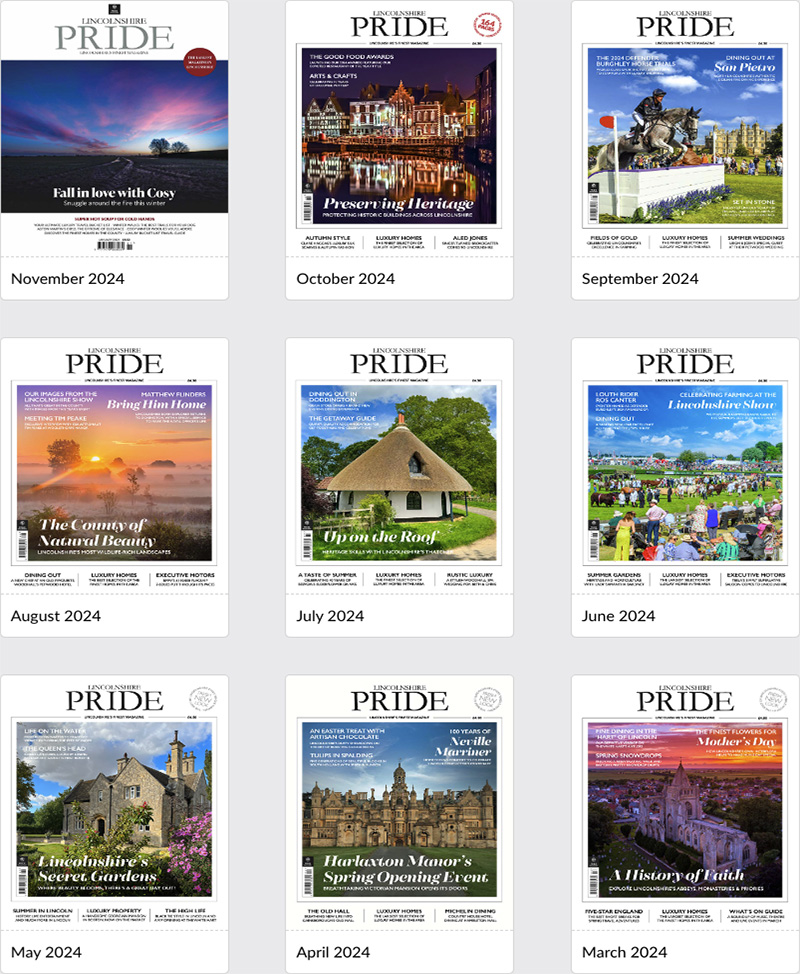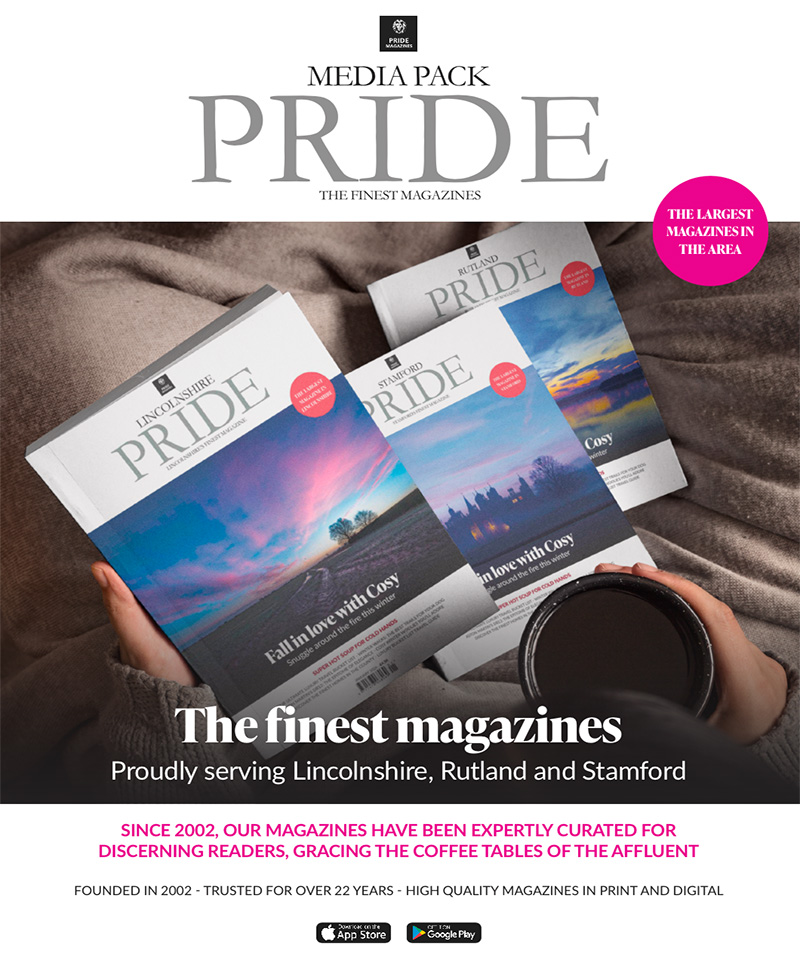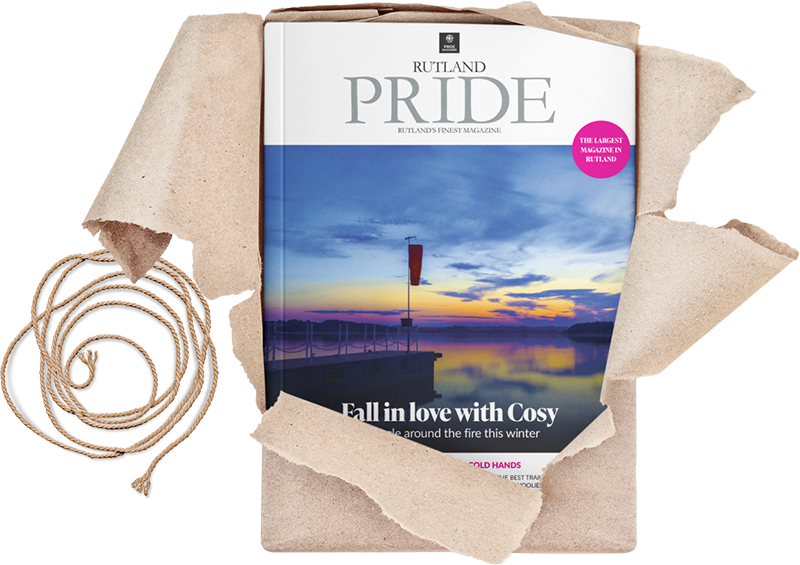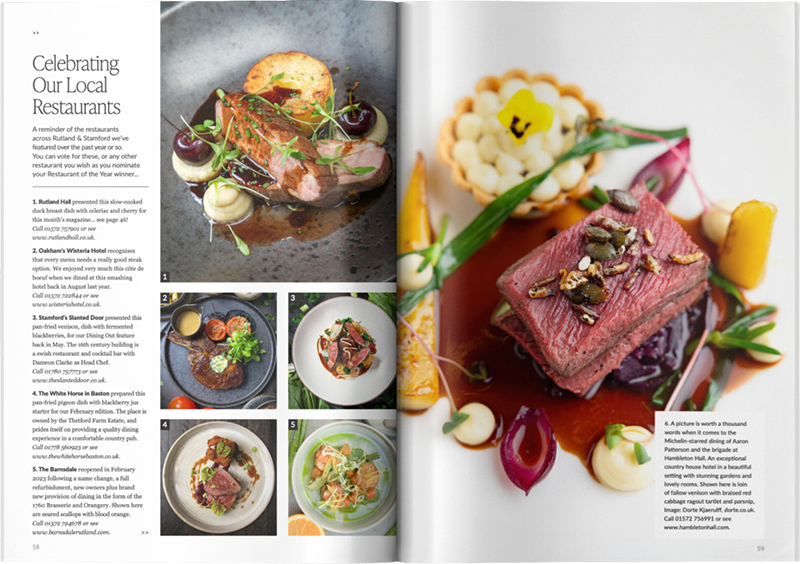The Art of Silk with Emily Carter
Illustrator and textile designer Emily Carter reflects on a decade of creativity, championing craftsmanship, sustainability and storytelling inspired by the natural world. This month she reflects on some exciting developments for her Rutland-born brand…
The benefit of hindsight is something which, sadly, eludes us all. We can, however, reflect on what we could have done in the past and bring to bear that introspection in the future… not that Emily Carter has cause to regret anything.
“I wonder if I should have sought investment and founded the brand immediately upon leaving university,” she considers. Instead, Emily graduated from the London College of Fashion in 2014, achieving a bachelor’s degree in Fashion Textiles. She then sought employment… with Harrods.
Today she still divides her time between living by the Thames in Hammersmith and returning regularly to her family home in Duddington, on the border of Rutland and Northamptonshire.
Emily continued to establish her brand of textiles and home accessories, featuring her hand-drawn illustrations, whilst she was working in Knightsbridge as a designer.
There, she was responsible for liaising between different brands or makers and with some of the store’s most discerning customers to accommodate bespoke personalisation to their products, creating one-off designs or elements.
In 2019, Selfridges placed a significant order with Emily, and other retailers soon followed. Thus, Emily was not only able to pursue the business as her exclusive career, but secure retail partners for her brand, and to select only the most credible luxury retailers including Liberty, Fortnum & Mason and Harvey Nichols as stockists.
Just over 10 years after launching her first collection, and six years after securing her first stockist, Emily’s brand is going from strength-to-strength.
We spoke to Emily fresh from an appearance at the National History Museum where she gave a talk about her passion for insects, wildlife and the capacity of illustration and visual storytelling to provide a way to engage with natural history.
“Insects are integral to entire ecosystems, and it was a pleasure to illustrate Insectarium last year. Aimed at youngsters, the book explores some of the 5.5 million species of insects – the Natural History Museum holds over 13.5m specimens of Lepidoptera alone – and it introduces them to budding entomologists highlighting the importance of insects to entire ecosystems.”
Emily has also contributed to illustrations in Insectile Inspiration, and most recently Avian Inspiration, which explores how birds have influenced designers throughout art history. The book launched in June this year and is the third in a series of beautiful coffee table volumes that have already taken botanical and entomological subject as their inspiration.
Already Emily has established herself as the creator of beautiful British made silk scarves, hand-printed and designed with her illustrations arranged in symmetrical patterns. They’ve been worn by icons such as Kate Moss and have featured in British Vogue.
Emily became a member of the British Fashion Council in 2016 where she first began exhibiting at London Fashion Week. She has since received numerous awards for her work, such as Forbes 30 Under 30 list which recognises emerging talent.
From high summer though, her work will also appear on a range of 12 dresses, tops skirts and trousers for the brand Anthropologie, available in four different prints and available from mid-July.
“I’m awaiting the samples at the moment but I’m really excited. I’ve been working with the brand since December which is a relatively short amount of time to bring a collection to market, but I’m anticipating that they’ll look wonderful!”
Probably the most significant recent development in Emily’s career though is a new partnership with Radius Brands, an agency that will offer Emily the opportunity to license her illustrations to those producing luxury fashion and homeware.
Emily says Radius is the perfect fit for the brand as she can retain control over the values that she feels protective about, from ensuring products are made in Britain or that manufacturing favours small UK makers which can avoid waste and make a considerable effort to ensure their products, packaging and operations are as sustainable as possible.
“In hindsight, I’m quite glad that I didn’t partner with anyone before and afforded myself the time and stability for personal and creative growth,” says Emily. “I think that subconsciously I was holding back, because I don’t want to just be a product designer responsible for just putting stuff out.”
“Fast fashion has never appealed, and I don’t want to develop a brand if the success is at the expense of my inner moral compass.
If you’re going to take inspiration from the natural world, it’s only right that you have a profound respect for it.”
“I went to Cape Town this year and it was an incredible experience. A safari brought me face to face with some of the most spectacular animals I’d ever seen, and it left me profoundly inspired but also really conscious of the need to ensure that that way we live our lives doesn’t impact our own part of the world or other ecosystems that are so different elsewhere.”
Emily’s desire for authenticity extends to the way in which she works, too. Her ink drawings are produced using pen on fine art paper from her own vision, never copied and never replicating other illustrators’ work.
“I’ve tried to use technology to replicate sketching, but it isn’t the same,” she says. “Software is clever and innovations like a tablet and stylus are good, but hand-drawing has a look to it that technology just can’t replicate.”
“I think it’s akin to listening to digital music; CD quality audio or streaming. It’s very clear but very crisp – almost too perfect – as distinct to listening to a track on a vinyl album, where the fidelity is warm and authentic. Humans introduce idiosyncrasies when they use a tool like a pen, which I don’t think can be replicated by a computer.”
“There are two elements to my work, the first being the individual subject; a bird or insect or a flower, for example. Then, there’s the creation of a symmetrical design for a scarf, for example, which I composite on the computer. Colour is best added at this stage as software enables you to be more precise in how it is reproduced, and you can adapt a design and create different colourways, so it’s more practical.”
“But I’ll never give up the experience of working at my desk, usually with ambient sounds in the background, or that combination of pen and paper which is so tactile and so tangible.”
“It’s an authentic, profound way to work, and I absolutely love the creative process. Looking back over the past 10 years, I can’t say for sure whether I’d have made different decisions in establishing a business, but in terms of establishing a brand, I’ve remained true to myself and to my moral compass, and so for that reason, I really wouldn’t change a thing.”
Emily Carter is the Duddington artist and designer who has established her brand of accessories – silk scarves and pocket squares – and art prints, as well as a range of stationery and home textiles. Her work features in two volumes of work, Insectarium and Avian Inspiration. Emily has also partnered with Anthropologie to create a range of fashions which will be on sale as Pride goes to press. See www.emily-carter.co.uk.
See our full feature in our August edition at https://www.pridemagazines.co.uk/stamford/view-magazines?magazine=August-2025
